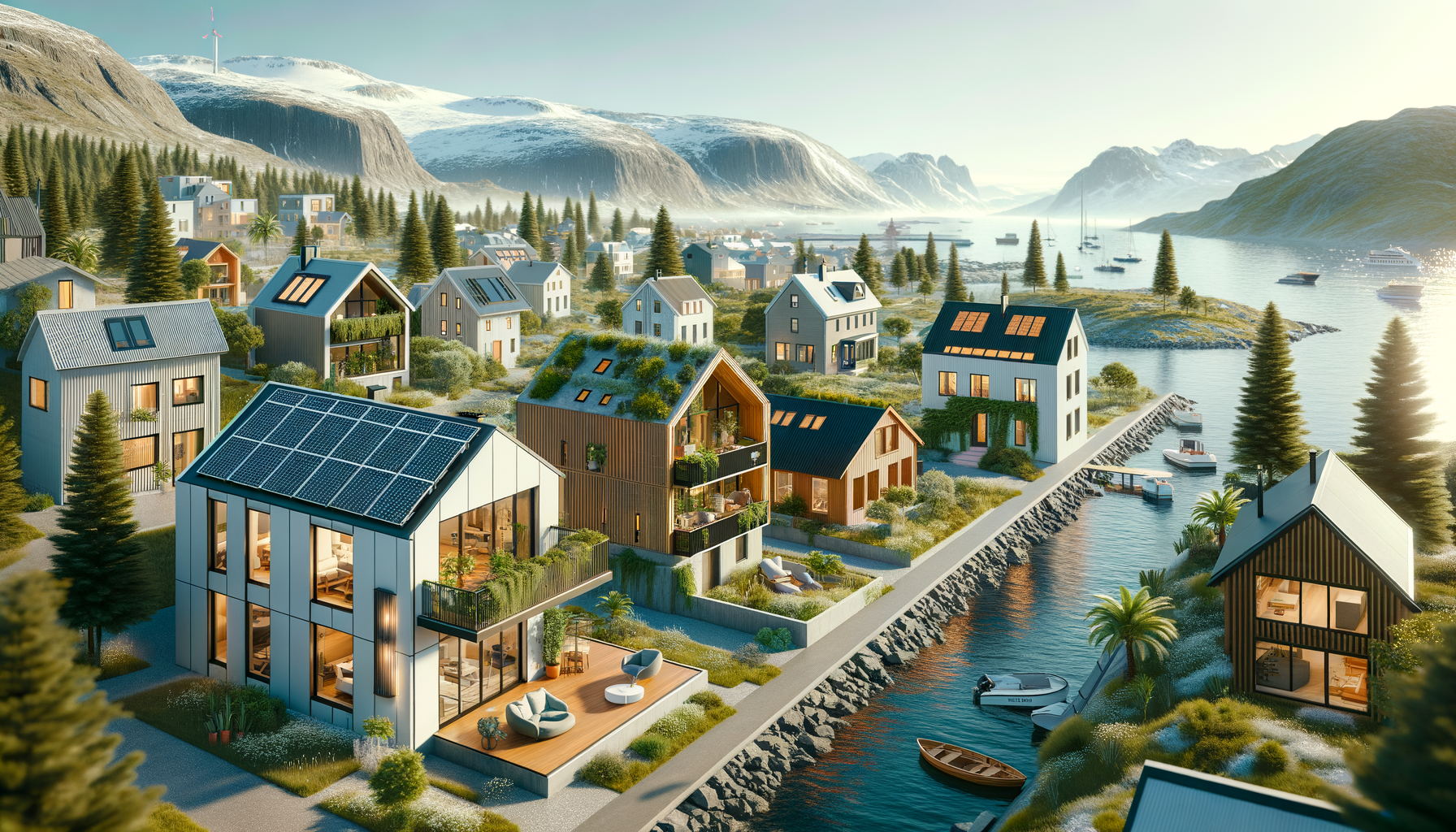
Exploring the World of Prefabricated Homes: Efficiency Meets Modern Living
Introduction to Prefabricated Homes
In recent years, the housing industry has seen a significant shift towards more sustainable and efficient building practices. Among the forefront of this movement are prefabricated homes, which are gaining popularity for their blend of efficiency and modern living. These homes are constructed off-site in a factory setting, then transported and assembled at the final location. This method not only reduces waste but also ensures a more controlled and precise building process, making it a compelling option for those looking to build a home that meets contemporary needs.
Prefabricated homes are designed with modern aesthetics and functionality in mind, offering a wide range of styles and finishes. They are often customizable, allowing homeowners to choose layouts and features that suit their personal tastes and lifestyle requirements. As a result, these homes are not only efficient but also align with the modern trend of personalized living spaces.
The increasing interest in prefabricated homes is driven by several factors, including their cost-effectiveness, reduced construction time, and environmental benefits. As more people become aware of these advantages, the demand for prefabricated homes is expected to grow, potentially transforming the housing market as we know it.
Efficiency and Sustainability in Prefabricated Homes
One of the most significant advantages of prefabricated homes is their efficiency. The controlled environment of a factory setting allows for precise measurements and construction practices, minimizing material waste and energy consumption. This efficiency translates into cost savings for both manufacturers and consumers, making prefabricated homes an attractive option for budget-conscious buyers.
Moreover, prefabricated homes are designed with sustainability in mind. Many manufacturers use eco-friendly materials and incorporate energy-efficient systems, such as solar panels and advanced insulation techniques. These features not only reduce the home’s carbon footprint but also lead to lower utility bills for homeowners.
Another aspect of sustainability is the reduced construction time associated with prefabricated homes. Traditional building methods can take several months to complete, whereas prefabricated homes can be assembled in a matter of weeks. This rapid construction process not only saves time but also reduces the environmental impact associated with prolonged construction activities.
In summary, the efficiency and sustainability of prefabricated homes make them a viable solution for those looking to reduce their environmental impact while enjoying the benefits of modern living.
Customization and Design Flexibility
Prefabricated homes offer a level of customization and design flexibility that is often unmatched by traditional building methods. Homeowners can choose from a variety of floor plans, finishes, and features to create a living space that reflects their unique style and needs. This customization extends to both the interior and exterior of the home, allowing for a truly personalized living experience.
Some common customizable options include:
- Room layouts and sizes
- Kitchen and bathroom designs
- Exterior finishes and colors
- Energy-efficient systems and appliances
This flexibility is appealing to those who want a home that is tailored to their lifestyle, whether it’s an open-concept layout for entertaining or a compact design for efficient living. Additionally, prefabricated homes can be easily expanded or modified in the future, providing long-term adaptability as needs change.
The ability to customize prefabricated homes makes them an attractive option for a wide range of buyers, from young families to retirees seeking a home that accommodates their specific preferences and requirements.
Cost-Effectiveness of Prefabricated Homes
Cost is a significant factor for many homebuyers, and prefabricated homes offer a cost-effective solution without compromising on quality. The streamlined construction process and reduced labor costs associated with prefabricated homes result in lower overall expenses compared to traditional building methods.
Several factors contribute to the cost-effectiveness of prefabricated homes:
- Reduced material waste due to precise factory construction
- Lower labor costs from shorter construction times
- Bulk purchasing of materials by manufacturers
- Energy-efficient designs that lower utility bills
These cost savings make prefabricated homes accessible to a broader audience, including first-time homebuyers and those looking to downsize. Additionally, the predictable costs associated with prefabricated homes can help buyers avoid unexpected expenses that often arise during traditional construction projects.
Overall, the affordability of prefabricated homes, combined with their modern features and efficiency, makes them a compelling choice for those seeking a new home.
The Future of Prefabricated Homes
As the demand for sustainable and efficient housing continues to grow, prefabricated homes are poised to play a crucial role in the future of the housing market. Advances in technology and design are continually improving the quality and appeal of these homes, making them an increasingly viable option for a wide range of buyers.
One area of innovation is the integration of smart home technology into prefabricated homes. Many manufacturers are incorporating features such as automated lighting, climate control, and security systems, providing homeowners with greater convenience and control over their living environments.
Additionally, the rise of urbanization and the need for affordable housing solutions in densely populated areas are driving interest in prefabricated homes. Their quick construction times and adaptability make them ideal for urban settings, where space and resources are often limited.
In conclusion, the future of prefabricated homes looks promising, with continued advancements and growing awareness of their benefits likely to increase their prevalence in the housing market. As more people recognize the advantages of these homes, they may become a standard choice for modern living.